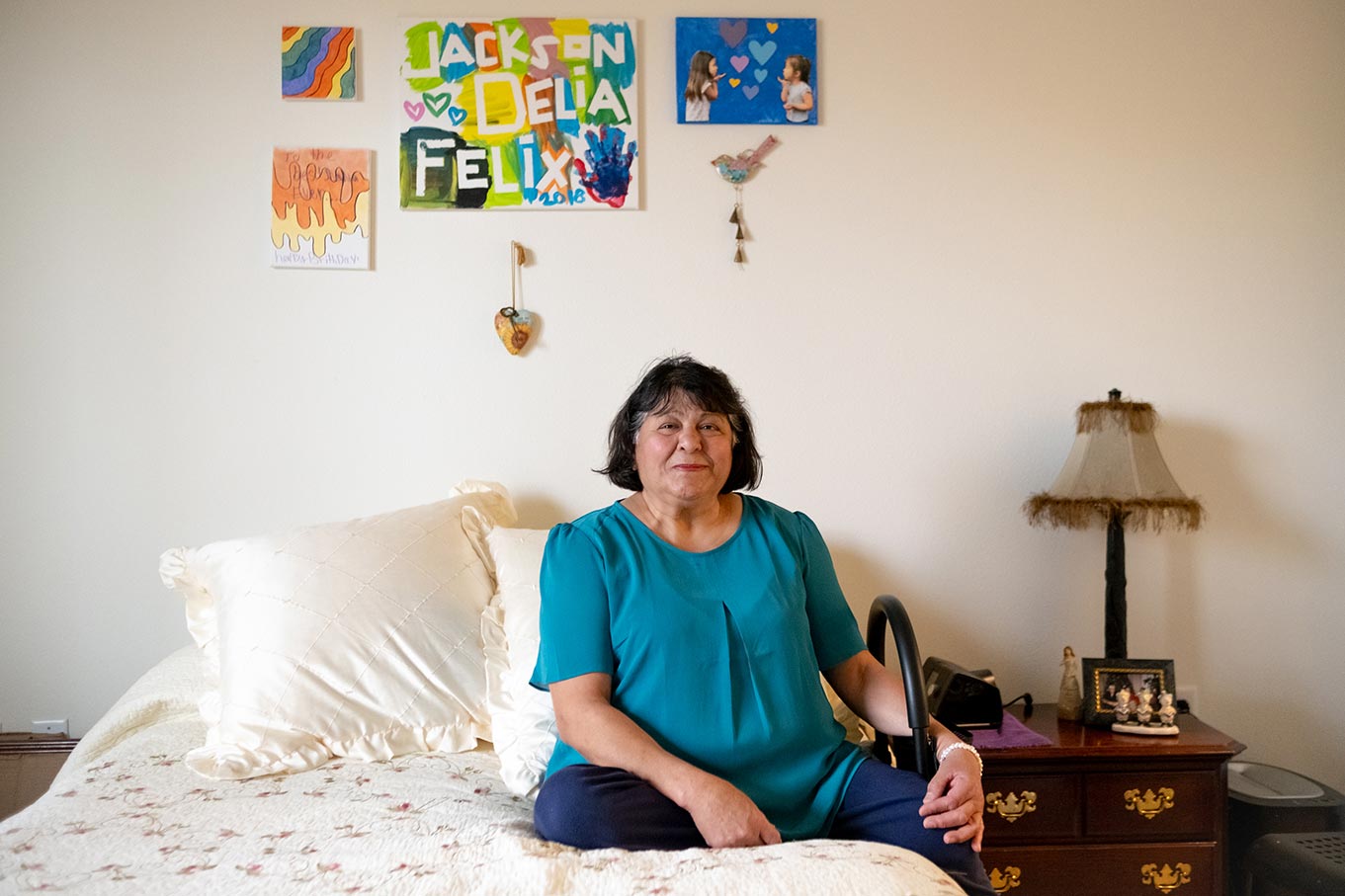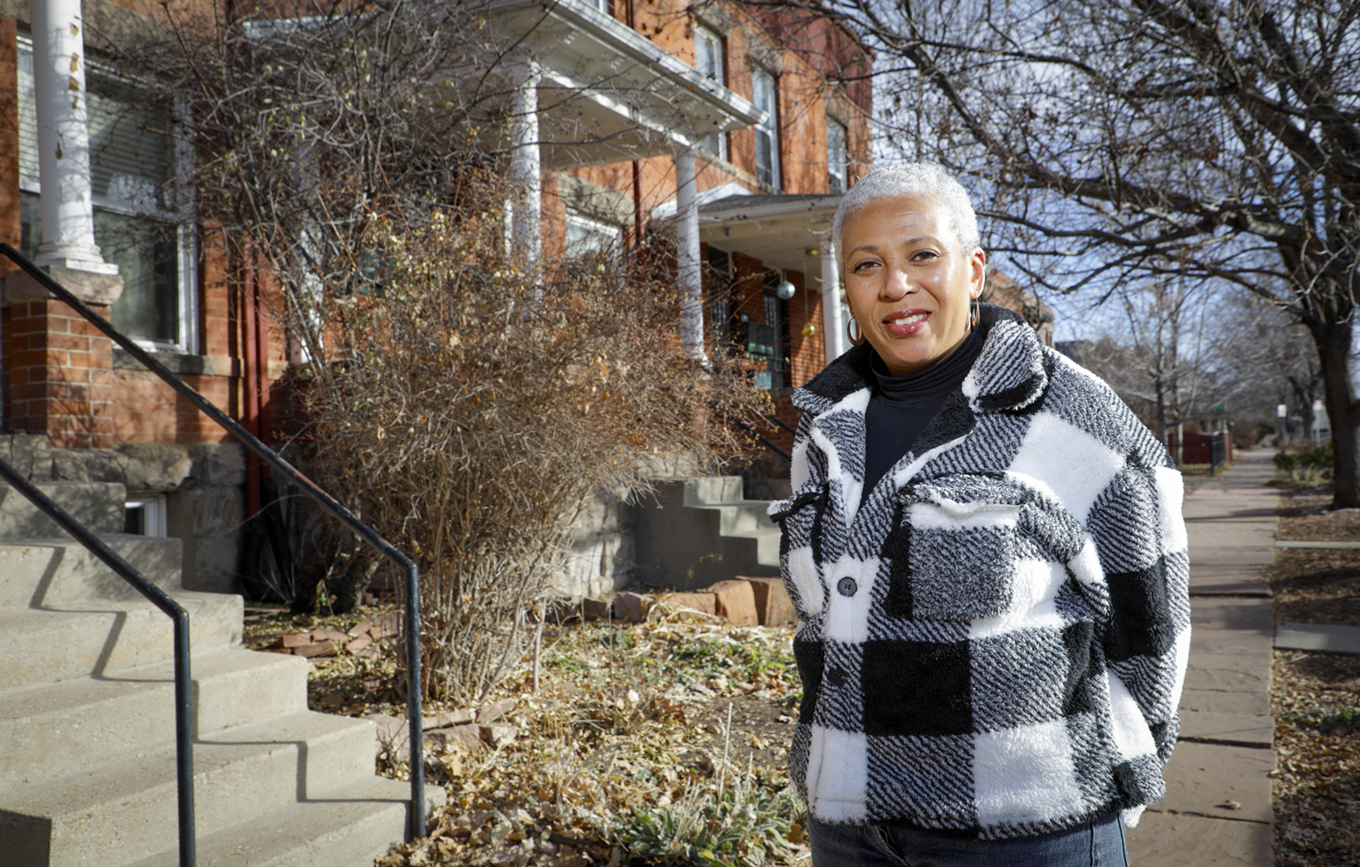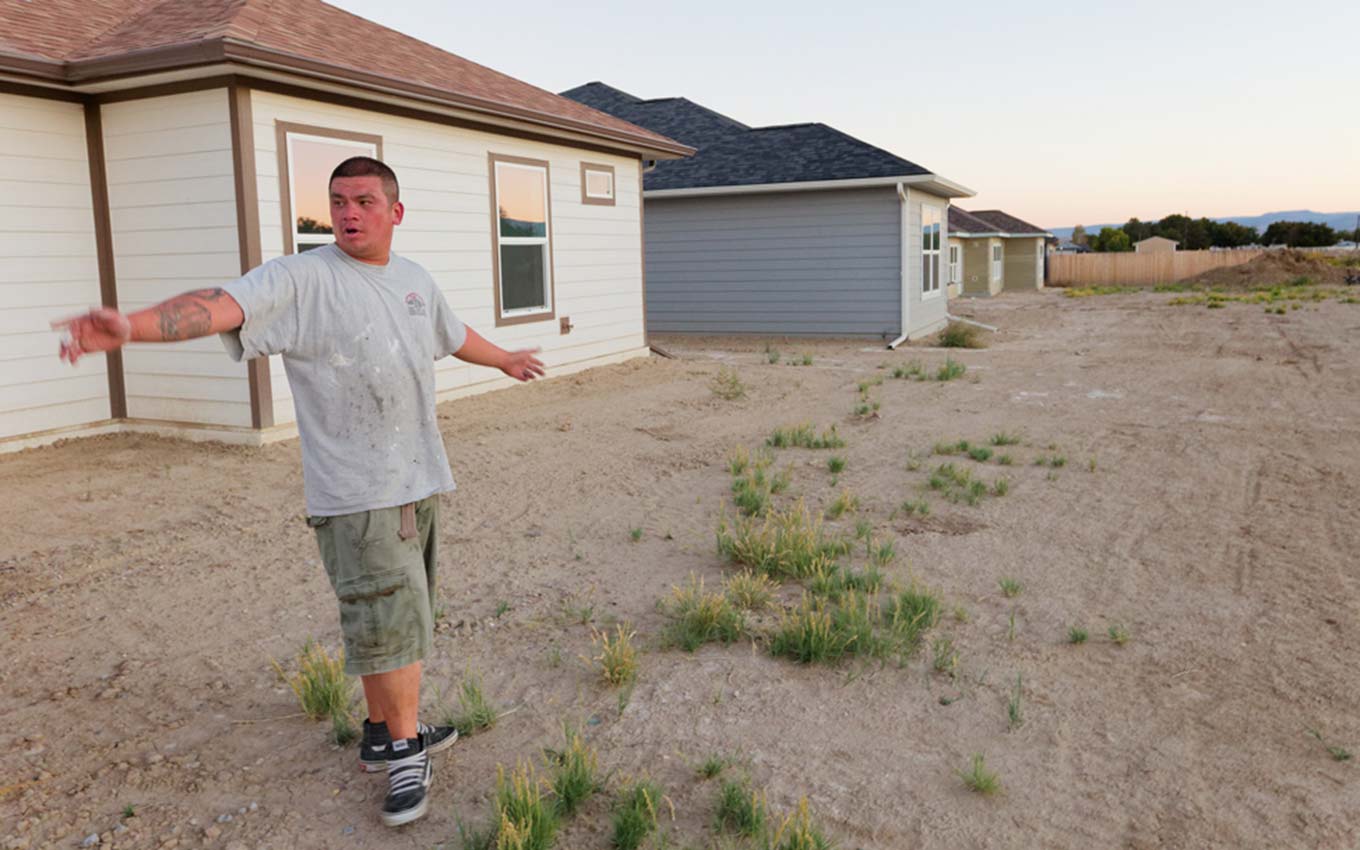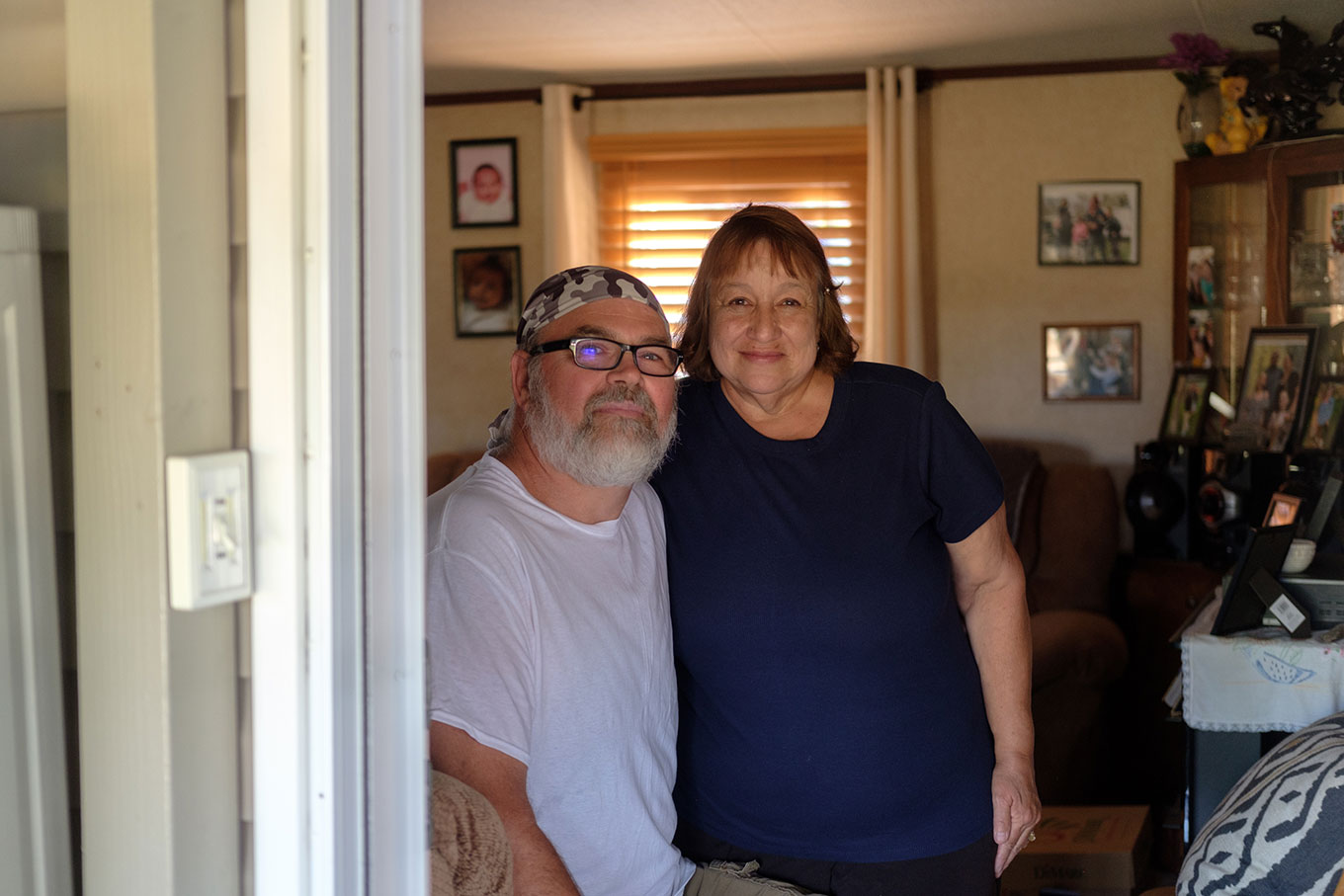When 69-year-old Theresa Pittman saw a flyer in the lobby of her apartment complex in Denver’s Montbello neighborhood about a free aging-in-place program for seniors, she jotted down the info so she wouldn’t forget. She didn’t know what to expect but was open to trying anything to make her daily tasks easier.
After Pittman signed up, a nurse and occupational therapist came to her home a few weeks later to discuss her goals. For Pittman, getting on and off the toilet had gotten more challenging, as had picking things up off the floor and getting a good night’s rest.
The team ordered her a raised, more accessible toilet, as well as a hand grabber to help pick things up from the floor. She’s doing daily stretches for her back to help alleviate the pain, which has also improved her sleep.
“It’s nice to have someone to talk to and problem-solve with,” she said. “They really listened.”
The national CAPABLE program—brought to Colorado by the Colorado Visiting Nurse Association in 2017 in collaboration with Habitat for Humanity of Metro Denver—couples eligible older adults with a nurse, an occupational therapist, and a construction expert to help find ways to improve their quality of life and maintain their independence. The program was established by researchers at the Johns Hopkins School of Nursing in 2017. In Colorado, the program has since expanded to Colorado Springs and Pueblo, and soon to Fort Collins.
In 2022, the Colorado Visiting Nurse Association launched a pilot program with the help of a $2.3 million grant from the Colorado Department of Health Care Policy and Financing to enroll Medicaid patients in the program. The funding has expanded the number of home visits by nearly 55%. In 2023, the team conducted 1,716 home visits, up from 940 in 2022, according to Colleen Morton, a registered nurse and the CAPABLE program manager.
Morton hopes the pilot program helps pave the way for CAPABLE to become a permanent benefit for Medicaid clients. “To be sustainable, we need sustainable funding,” she said.
Morton has been working to get the word out by hosting educational presentations in collaboration with housing authorities. The program also receives referrals from social workers, case managers and other nonprofits.
“It’s really been all hands on deck for this program,” Morton added. “We want to see it succeed.”
How it works
To qualify, a person must be 65 and older, living at or below 80% of the area median income, and having difficulty performing at least one activity that impacts their quality of life, such as bathing, using the toilet or cooking. In Colorado, the average participant is 80 years old and on a fixed income of $2,000 a month, according to the program’s website.
The program includes 10 home visits—four with a nurse and six with an occupational therapist who helps put together the plans for home modifications that the Habitat for Humanity of Metro Denver construction team will complete. Common modifications include installing safety bars, improving lighting, repairing floors and changing doorknobs.
Often, the team has to get creative. Some home modifications have included replacing heavy vacuum cleaners with lighter ones to reduce strain or problem-solving ways for clients to conserve physical energy, such as doing laundry over three days instead of multiple loads in a single day. The team installed bookshelves in one home to get things off the ground and reduce the likelihood of tripping. Sometimes, it can be as simple as buying the client a squishy mat to stand on while cooking to alleviate back pain or cleaning out a sliding door track so it opens more easily.
Toilet hygiene is often a top goal. “It doesn’t get talked about enough,” said Amanda Goodman, an occupational therapist for 18 years who works with the CAPABLE program. “Just to be able to have a space for people to be honest and truly share those intimate things, and knowing that they trust me with that… it’s just wonderful.”
Goodman recently got an email from a past client that read, “Every time I sit on the throne, I think of you!” (“We got him a bidet,” she said with a chuckle.)
Goodman knows her clients often struggle with things she can do nothing about.
“We’re not going to come in here and solve everything,” she said. “We understand that some things we may not be able to improve a lot, but even a little bit would be better.”
CAPABLE’s effect on affordable housing
Linna Shu, the senior research associate at the Housing Finance Policy Center at the Urban Institute, said the CAPABLE program and others like it are critical to increasing affordable housing options for seniors, many of whom might not have another choice but to age in place.
“People often talk about how we need to do more retirement communities, but that’s also not affordable,” Shu said. “If you look at the monthly charges or the annual charges, it’s way above the income level for most of the seniors, particularly for seniors of color.”
In the U.S., more than 1 in 6 Americans, or 55.7 million people, are 65 or older, a 38% increase since 2010, according to the U.S. Department of Health and Human Services. And three-quarters of those age 50 or older prefer to stay in their homes as long as possible. However, a lack of affordable housing options that are suitable for older adults with mobility issues or disabilities is a significant barrier. Many older adults live on fixed incomes, leaving little room for home renovations or adjustments.
Shu feels optimistic about using Medicaid to supplement the CAPABLE program and make it affordable for participants.
“That’s a very interesting idea, and maybe a way to make it more scalable,” Shu said. But it certainly wouldn’t be a fix-it solution, she added. More needs to be done at the federal and regional policy levels to increase the housing stock for seniors and preserve existing units.
Empowering clients
During an informational session at her apartment complex, Delia Aguilar, a 67-year-old living in an income-based community for older adults in Centennial, came across the program similarly to Pittman.
Her main issue was being unable to sit comfortably at her dining room table and having difficulty getting to and from the shower and toilet. The CAPABLE team installed grab bars near the toilet, in the shower and on the side of the bathtub, as well as nonslip pads on the bottom and outside of the tub.
“I used to hate getting in there,” Aguilar said of her bathtub. “And I can tell you, [the difference] is like night and day.”
Before the CAPABLE team helped her, Aguilar said she had been waiting more than 18 months for building management to handle these modifications.
The team provided items to increase Aguilar’s comfort and mobility, including a padded toilet seat, a cushion for sitting at the dining room table, and railings to help her get in and out of bed. They also added automatic lights in the bathroom so that if Aguilar gets up in the middle of the night, she won’t stumble in the dark. And the occupational therapist even helped Aguilar set up her computer—a task she had been struggling with for months.
Ultimately, the program helped her feel motivated and less hopeless.
“I’m still in awe,” she added. “They were angels.”
Goodman, the occupational therapist, said their main priority is empowering their participants.
“Our overall goal is for me to guide them and coach them into being able to come up with the solutions themselves,” Goodman said, “so when that future problem comes up, they no longer feel stuck. They feel like they have the self-efficacy and the empowerment to face that challenge.”
Often, a person has been doing a task the same way for so long that having a fresh pair of eyes is helpful. “They don’t realize there are other options out there because they’ve lived in this house for so long,” Goodman said. “Why would they even think about changing the doorknobs?”
After a client finishes the 10-visit program, they are asked to take a survey. They often write that they wish the program was longer.
“They enjoyed having someone to talk to and to truly be able to share how they feel,” Goodman said, adding that it’s sometimes hard for people to open up to family members because they don’t want to worry them or feel like a burden.
For Morton and Goodman, one of the most challenging aspects of the program is getting a client to admit that some daily tasks have gotten more difficult.
“It can’t be someone’s children saying ‘My parent can’t do this,’” Morton stressed. “They have to admit that it’s something they are starting to struggle with.”
She said that’s easier said than done for many people, especially if they fear it might mean they can’t live independently anymore—which is antithetical to the program’s goal. This makes building trust all the more important, Morton said.
“For some people, it’s just not the right time” to participate in the program, she said. “They’re not in the headspace, in the mentality to move forward.”
If that’s the case, she gives them her phone number and tells them to give her a call if something changes. When they do, Goodman is ecstatic. “That’s an ideal scenario, too, because that means they’re initiating, right? They’re showing some initiation… to try to make changes,” she added.
The best part of her job, Goodman said, is when she sees a client’s face light up with amazement when asked if they’ve noticed any improvements since their last visit.
“That’s why I still see people,” she said. “That’s why I tell everybody, ‘You will not take me out of the field.’”
One unforeseen benefit of the program has been participants socializing and getting out into the community more after completing the program, which improves their mental health, Goodman said. “They felt like they could enter and exit their home safely again, which was big.”
Since Aguilar graduated from the program this summer, she’s invited more friends to play cards and eat. With the new kitchen table and more accessible toilet, her friends are more comfortable coming over, Aguilar said.
“The quality (of life) has improved considerably,” Aguilar said. “I thank God for putting them in my life.”
Related story: The Government Initiative Helping Older Adults Maintain Their Independence



